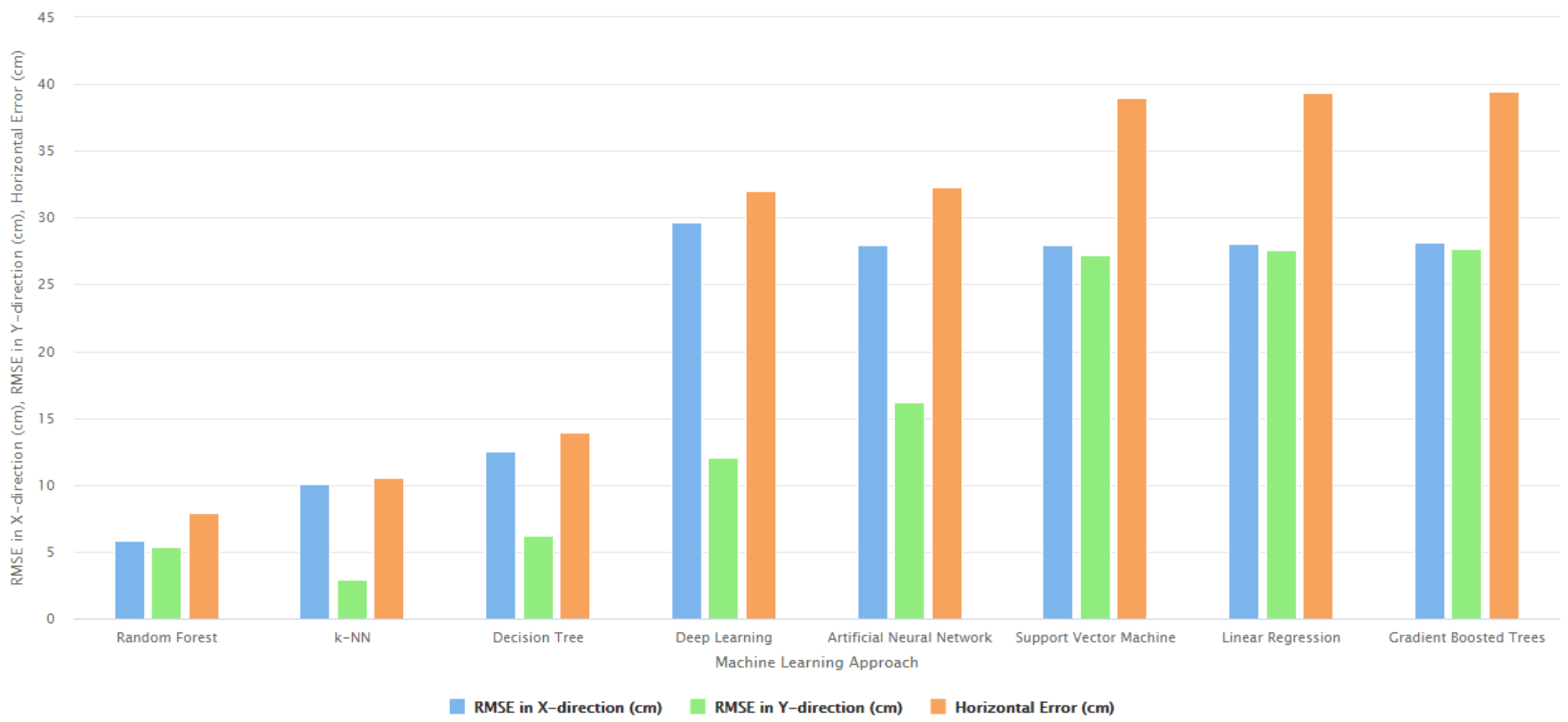Researchers Propose a High-Accuracy Approach for Indoor Location Detection, With Various Potential Applications in Future ‘Smart' Environments
CINCINNATI, OH / ACCESSWIRE / April 1, 2021 / While GPS can help us successfully navigate outdoors, detection of indoor locations remains a challenge and needs to be addressed to enable age-friendly smart environments for the rapidly increasing aging population of the world. In a new study, researchers from the US take indoor location detection to the next level through their proposed artificial intelligence and machine learning-based approach that achieves a record accuracy in indoor location detection, opening doors to better living for the elderly and for addressing several other societal needs.
Today, outdoor navigation has become easier because of the GPS tracking system built into our smartphones, which enables us to precisely track objects and people in real-time. This method, however, cannot be applied for navigation and position detection indoors. This is because GPS navigation essentially relies on a line-of-sight communication between the satellites and receivers, a feat that cannot be pulled off in an indoor environment.
While indoor location detection or localization may not seem highly important to some of us at the moment, our increasing reliance on computers, machines, robots, and other technologies will soon change this thought. In fact, in a future comprising smart homes, smart workplaces, smart vehicles, smart cities, and other smart environments, indoor localization is expected to become a necessity. "An indoor localization system that can detect, track, locate, analyze, and predict the position of people and objects inside closed or semi-closed environments, would play a crucial role in augmenting user experiences, increasing trust in technology, and improving quality of life in the future of smart and interconnected environments," remarks Nirmalya Thakur from University of Cincinnati, USA, a leading researcher in the field of Human-Computer Interaction.
According to Thakur, indoor localization can address diverse societal needs that often originate indoors, for example, helping elderly people with various forms of cognitive impairments to execute daily routine tasks, assisting visually impaired individuals in navigating from place to place, recording and reporting the accurate location of an elderly fall in indoor environments to emergency responders or caregivers, and tracking the location of patients with Alzheimer's disease to alert caregivers in case of freezing of gait. Besides, indoor localization can help to track products in smart manufacturing sites and assist in the operation of unmanned vehicles in automated industrial settings. However, several research challenges need to be overcome first, such as the dependence of the existing indoor localization approaches on environment and context, the need for better precision and accuracy in detecting the indoor location of people and objects, and identification of the optimal machine learning approach for the development of such systems in the future.
In a recent paper published in the journal Information, Thakur and Chia Y. Han, from the Department of Electrical Engineering and Computer Science at the University of Cincinnati, address these challenges by proposing multiple novel approaches for indoor localization with a specific focus to improve elderly people's quality of life in Smart Homes. Their work explores the intersections of Big Data, Artificial Intelligence (AI), Machine Learning (ML), Internet of Things (IoT), Human-Computer Interaction (HCI), Pattern Recognition, and Ambient-Assisted Living (AAL), and makes four novel contributions to the field of indoor localization: (1) a Big-Data-based method that studies the multimodal components of user interactions to track the indoor location during daily routine activities, (2) a context-independent human behavior centric versatile approach for detecting the indoor location in any IoT-based environment, (3) detection of a user's indoor position based on their interactions with the context parameters and the user-centered local spatial context, and (4) an exhaustive comparative study of different ML approaches to deduce the best approach for developing indoor localization systems and applications.
For (1), the researchers based their approach on an ML technique called "k-nearest neighbor," which analyzes the data from Bluetooth Low Energy (BLE) beacons and BLE scanners to track a user's indoor location during different activities, that yielded a performance accuracy of 81.36%. For (2), they developed a "random forest"-based ML model that can interpret the accelerometer and gyroscope data to detect the user's indoor location in any environment, irrespective of its setting, with a similar performance accuracy. In fact, (4) revealed that the random forest approach was best suited for developing any indoor localization system. Moreover, when they evaluated the performance of their approach as per the standard metrics for error estimation mentioned in ISO/IEC18305:2016 (an international standard for testing localization and tracking systems), they found a record-high accuracy in indoor location detection, a major breakthrough in the field!

Figure: Researchers compared the performance of different machine-learning-based approaches for indoor localization as per the standard metrics for error estimation, mentioned in ISO/IEC18305:2016 - an international standard for testing localization and tracking systems, and found that the Random Forest-based ML approach is best suited for the development of such applications. Figure courtesy: Nirmalya Thakur from the University of Cincinnati
Thakur is excited about the findings and looks forward to implementing their proposed approach in different IoT-based environments in the future. "As a next step, we plan on setting up IoT-based interconnected environments that would simulate the future of interconnected Smart Homes, to implement this indoor localization system in real-time," he comments.
Looks like the vision of a smart future that caters to people in their dotage is not far from being realized!
REFERENCE:
Authors: Nirmalya Thakur and Chia Y. Han
Title of the paper: Multimodal Approaches for Indoor Localization for Ambient Assisted Living in Smart Homes
Journal: Information
DOI: https://doi.org/10.3390/info12030114
Affiliations: Department of Electrical Engineering and Computer Science, University of Cincinnati, USA
About Nirmalya Thakur

Nirmalya Thakur is affiliated with the Department of Electrical Engineering and Computer Science at the University of Cincinnati, Ohio, USA. His research interests include Human-Computer Interaction, Artificial Intelligence, Machine Learning, Internet of Things, Data Science, and Natural Language Processing. He has authored 28 peer-reviewed publications in a combination of conference papers, journal publications, and invited book chapters. He has delivered 21 presentations in the form of keynote addresses and invited presentations at conferences in United States, Canada, China, France, Denmark, and Indonesia. He has reviewed more than 250 papers by serving on the reviewer board of 28 conferences and almost as many journals.
Nirmalya is a globally celebrated scholar in the field of Human-Computer Interaction and its interrelated disciplines and has received multiple nationally and internationally recognized awards and honors, including the recent Young Innovator award, the Young Scientist of the Year award, the Excellent Researcher award, and the Research Excellence award. His biography has also been featured by Marquis Who's Who twice, who since 1899 have chronicled the lives and achievements of the most accomplished individuals and innovators from around the world in their annual publications. For more details about his research, visit: https://homepages.uc.edu/~thakurna/
CONTACT:
Nirmalya Thakur
Email: [email protected]
LinkedIn: https://www.linkedin.com/in/nirmalya-thakur/
Website: https://homepages.uc.edu/~thakurna/
SOURCE: Nirmalya Thakur



